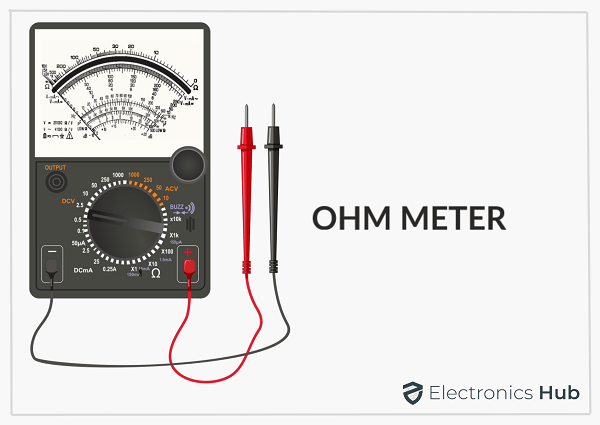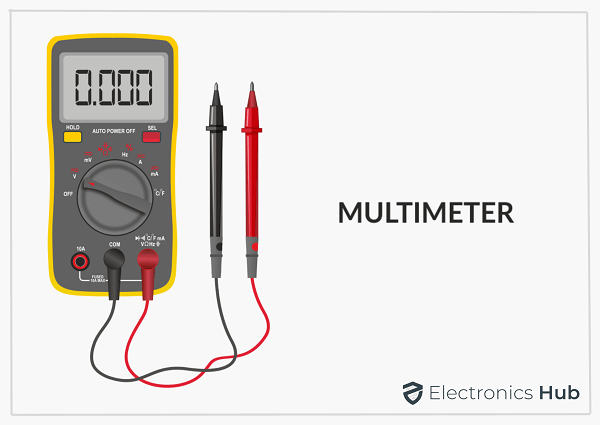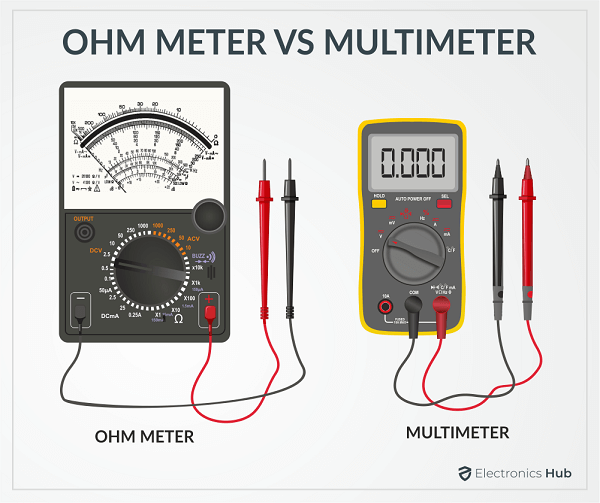You can connect the ohmmeter in series or parallel. When used in series, the resistance rises, and the current decreases. On the other hand, in series, the resistance increases and draws higher amounts of current. Ohmmeters have different variations like the micro-ohmmeter, milli-ohmmeter, and mega-ohmmeter.
What is a Multimeter?
A multimeter lets you measure current, resistance, and voltage. The device serves perfectly for measuring more than two electrical parameters. It is also suitable for measuring the electrical circuit’s continuity between two points. It works just like an ohmmeter. It is also referred to as a Volt-Ohm-Milliammeter as it has a blend of many other tools. With an advanced multimeter, you can measure different properties including duty cycle, continuity, and capacitance
Differences Between Ohm Meter vs Multimeter
What Are The Types of Ohmmeters?
Series type ohmmeter:A series type ohmmeter lets you measure the resistance by connecting it in series. Here, there will be a flowing current through the circuit. The component brings the measurement down from infinity to zero by adding resistance. It has to be noted that infinity is the free flow and it is the closest to 0.
When the measuring component is detached, the resistance becomes unlimited. It is the needle that is deflected towards infinity. The meter displays infinite resistance as well as zero resistance flow when there is no current or massive flow of current respectively. When you connect the measuring component to the circuit, the resistance will be relatively higher.
Shunt type ohmmeter:You can use a shunt type ohmmeter conveniently. This type of unit has to be attached in parallel to the battery. It can provide resistance according to the middle movement to the left. Keep in mind that it will not be able to provide infinity spots as well as current measurements.
Another factor to consider is that when the resistance value is zero, the meter will have zero current automatically. Similarly, when the resistance becomes high, the current flow from the battery, and the needle will go in the left direction. This type of meter does not come with a scale.
Multi-range type ohmmeter:Equipped with an adjuster, a multi-range type ohmmeter lets you use it for high ranges. It can change the range according to your requirements. This type of meter allows attaching the measuring component in parallel to the meter. The needle deflection displays the magnitude of resistance.
What Are The Types of Multimeters?
Analog multimeter: In an analog multimeter, you will find a needle that moves on a graduated scale. This helps to indicate the reading. However, it can be a bit inaccurate and is typically not used. You can use an analog multimeter for measuring small changes in measurements. It can be great when you set it as ammeters due to its high sensitivity and low resistance. Another advantage of analog multimeters is that they are cheaper. Digital multimeter:A digital multimeter is a device that suits professional technicians and electricians. Also called DMM, they are easy to use and have higher resistance. In a digital multimeter, you will find an LCD that can provide accurate measurements. Best of all, it can provide different options for measurements. You can find advanced as well as simple digital multimeters.
Conclusion
From the above, we can say that a multimeter offers better functionality. You can use it for different types of measurements making it great for professional applications. On the contrary, an ohmmeter serves great when accuracy along with continuity and resistance does not matter. They are two different units and each has different functionalities. Comment * Name * Email * Website
Δ








![]()